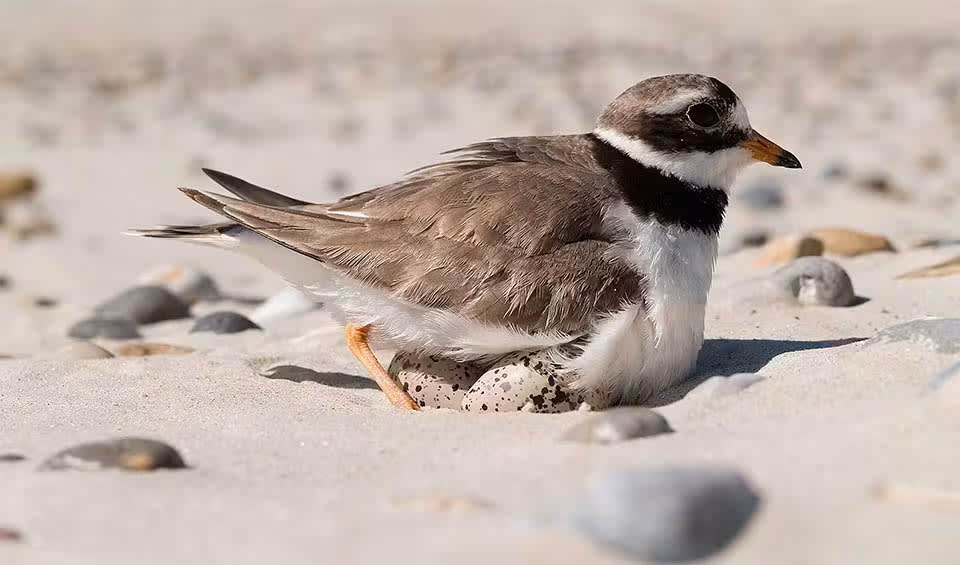Charadrius – Typical plovers
Killdeer has earned the title of largest ringed plover with prominent bands around its neck
Typical plovers are a diverse group of wading birds known for their short bills, rounded bodies, and characteristic behavior known as the ‘broken-wing act.’ Plovers are found globally and inhabit a wide range of environments, including beaches, mudflats, grasslands, and even urban areas.
One of the distinguishing features of many plover species is the presence of one or more distinctive bands or collars around their necks, which serve as camouflage and as a means of identification among species. These bands vary in color and number, with some species, like the Killdeer (Charadrius vociferus), sporting two striking black bands across the chest.
Killdeers are one of the larger members of the plover family and are readily identified by their bold pattern. Their plumage is generally brownish on the upper parts, providing excellent camouflage against their terrestrial habitats’ soil and dried vegetation. In contrast, their underparts are white, which may startle predators during flight, providing a crucial moment for escape.
Plovers are remarkably adaptable birds. Killdeers, for example, often choose nesting sites near human activity, such as gravel roofs, parking lots, and farm fields. This behavior may offer some protection from natural predators that avoid human structures. However, this proximity to humans also brings risks, including habitat loss and pollution.
Despite their resilience, plovers are not immune to the broader environmental impacts of climate change and human activities. Changes in precipitation patterns, rising temperatures, and rising sea levels can all alter the habitats that plovers depend on for breeding and foraging.
One of the most fascinating aspects of plover behavior is their use of distraction displays to protect their nests. When a predator or human approaches their eggs or chicks too closely, plovers will often perform a ‘broken-wing act,’ feigning injury to lure the threat away from their vulnerable offspring. This remarkable behavior is a testament to the birds’ intelligence and adaptability.
Species in this genus
Common ringed plover
This bird taps its feet to imitate rain to make the prey reach the surface
Forbes’s plover
Sometimes called the “dry country plover” because of its preference for inland habitats, unlike its more coastal relatives



